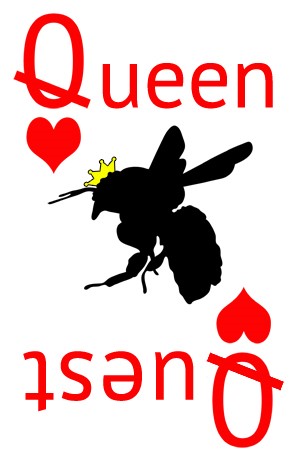Placing Your Bombicile
Project Overview Bombicile Designs Upload Your Bombicile Data
Placing Your Bombicile The Bombicile Challenge Recommended Resources
Bumble bee domiciles should be placed before the queens first emerge from hibernation in the spring. In Nebraska, queens begin to emerge in April, once temperatures increase and the first flowers bloom. In warmer parts of the United States, this can be as early as February. Domiciles may be placed later in the spring as different species of queens emerge at different times (some as late as mid-May in Nebraska).
Domiciles can be placed nearly anywhere that is secure from curious people or pranksters, protected from standing or running water, and will not be disturbed by machinery or livestock. Little evidence exists on where to place domiciles for best success. We have found naturally occuring bumble bee nests in fields, ditches, the middle of lawns, in trees, sheds, bird houses, under dog houses, in hay fields, compost piles, abandoned mattresses, and in railroad ties.
Bumble bees typically choose abandoned rodent dens for their homes. These dens are in cavities, typically protected from the elements, and contain rodent-gathered insulative materials. All of these elements are critical factors in bumble bee nest selection. We have tried raising pet mice in our domicile designs to impart mouse scents to the domicile. To date, this has not increased domicile acceptance. We do not recommend gathering wild mouse nest remenants for placement in your domiciles due to human exposure to rodent-carried diseases. Chemical cues may be a factor in finding bumble bee nests, however we have witnessed bumble bee queens examining (entering and leaving) our unscented bumble bee domiciles on several occasions.
Sight plays a big part in bumble bee queens finding nests. You can observe bumble bee queens searching for suitable nests sites as they either fly zigzagging back and forth several inches above the ground or in an "up and down" flight pattern above taller grass. We have observed this phenomenon on many occasions. Once a suitable nest site is found, the queen will gather nectar and pollen and begin her nest, usually not abandoning a nest once her eggs are laid. There are many great books on bumble bee biology.
Professional scientists have yet to discover a domicile design (and factors related to placement and attractants) that consistently attracts bumble bee queens to nest. The Bumble Boosters team is hesitant to provide suggestions on placement of domiciles and attractants as our ideas have led to poorly accepted domiciles. The Bumble Boosters team is looking for creative and unique ideas on bumble bee domiciles from those outside the professional scientific commmunity.
Frequently Asked Questions
Q. Where should I place my domicile?
A. Anywhere that is protected from vandalism, prying eyes, and running or standing water. Little information exists on the best domcile placement.
Q. When should I place my domicile?
A. Before spring queens emerge from hibernation, usually as the first flowers bloom in the spring. They can be placed a little later, as different bumble bee species in your area emerge from hibernation at different times.
Q. Should I place my domicile above ground, on the ground, bury it, or bury the entrance tunnels to the domicile?
A. Different species have preferences on nesting above or below ground. Unfortunately, this information is a bit scare. In Nebraska, in any one area we have 6-10 species of bumble bees with about half nesting naturally above and half nesting below ground.
Q. How do I know if bumble bees nested in my domicile?
A. Stand 6 feet or more away from the entrance of the domicile. Observe for 10 minutes whether bumble bees are entering or exiting the domicile. If you see a bumble bee entering or leaving, you likely have an nest established in your domicile. We recommend staying a distance from the entrance of the domicile to avoid a defensive response from bumble bees. Bumble bees will defend their nest from intruders. Away from the nest, bumble bees do not have an instinct to sting unless touched. Observe your domicile at one month intervals, starting 2 weeks after you place the domicile.
Q. I don't have bumble bees in my domcile, should I move it a few times during the year to find a better spot?
A. We do not recommend moving the domicile around (unless it has been disturbed). It is like fishing. Taking your fishing pole out of the water does not give the fish a chance to take the bait.
Q. My domicile does not have bumble bees in it. I am frustrated! Now what?
A. Setbacks are typical in science. We see this as a multi-year project. There is some evidence to suggest domiciles have a higher rate of acceptance if they are left outside in consecutive years.
Q. Where can I learn more about conserving bumble bees and creating domiciles?
A. Check out the Conserving Bumble Bees By Artificial Domicile Deployment and Bee-Wise Habitat Management sent with domicile kits. Or purchase your copy here.




